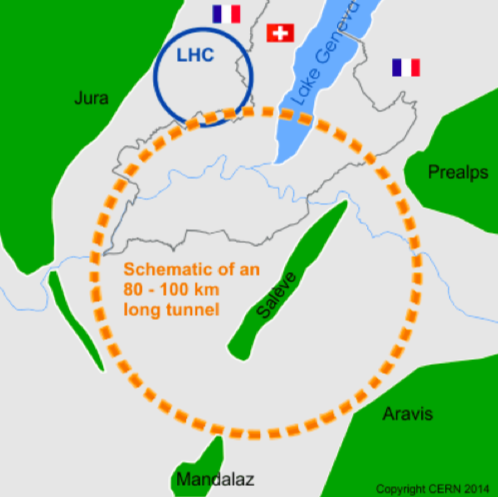
Measuring 27 km in circumference, the Large Hadron Collider (LHC) is the largest and highest energy particle accelerator in the world. However, in the not too distant future the LHC could be dwarfed by a potential new accelerator, the Future Circular Collider (FCC). If built the FCC will be 100 km in circumference and will be able to collide two beams of protons to an energy over seven times higher than the LHC.
The current first year students at the John Adams Institute were tasked with completing a design study on one potential part of the FCC project, a superconducting upgrade to the CERN's Super Proton Synchrotron, to be known as the scSPS. The scSPS would be required to take low energy beams of protons from the CERN Proton Synchrotron, boost their energy by a factor of fifty, and then inject them into the FCC.
The students split into three groups, one group working on the design of the magnets used to bend the beam around the accelerator, one on the superconducting cavities used to give energy to the beam and another on the arrangement of these cavities and magnets in the scSPS tunnel. The study progressed over two months, with each team feeding back their work at weekly meetings with experts in accelerator physics. The results of the study were presented to the JAI advisory board, at Imperial College London, and the team will be heading out to CERN to present the results to the FCC collaboration in June.
The accelerator design project is a requirement of the JAI accelerator physics PhD course and is a great way for students to put the theoretical concepts behind accelerator design into practice.